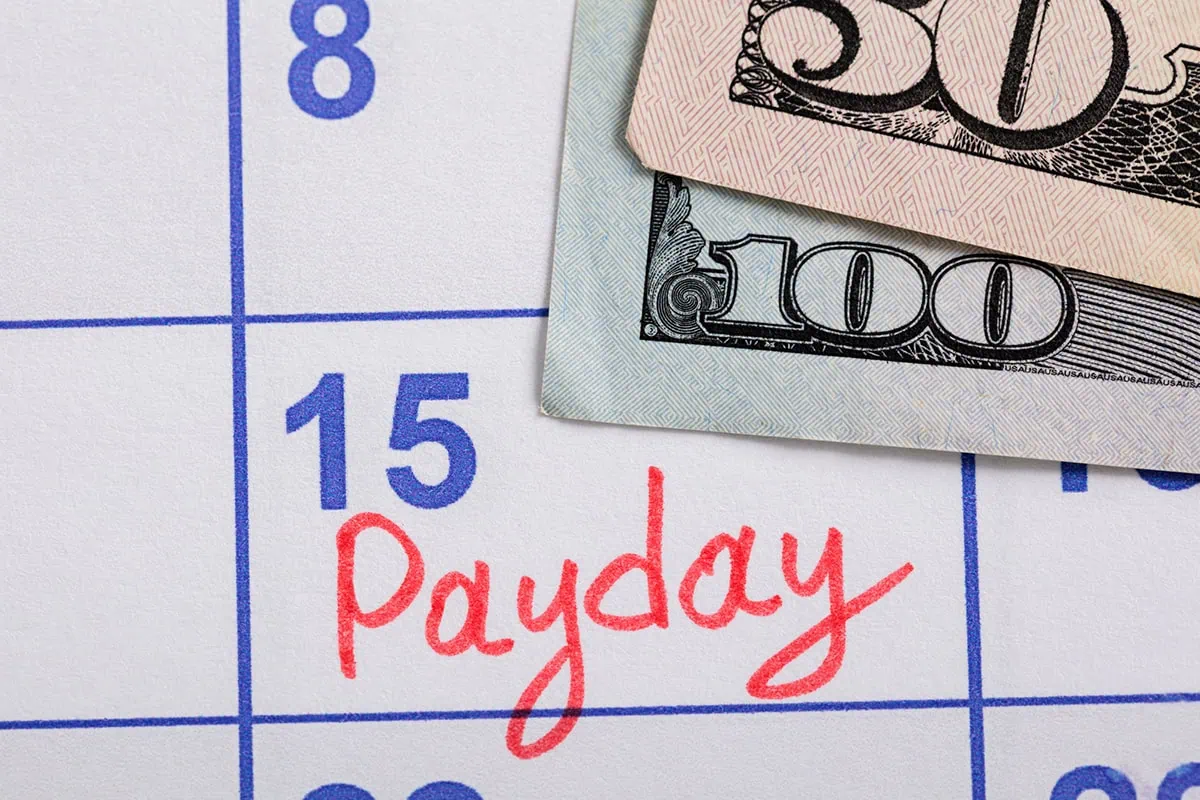The death of a spouse is perhaps the most difficult period in a person’s life. At the same time that you’re dealing with the emotional drain of losing your closest companion, you’re asked to take on a laundry list of tedious logistical and administrative issues … and somehow move on to the next stage of your own life.
It’s hard, simple as that. And if you’re reading this in anticipation of an upcoming loss, I’m truly sorry, and I hope I can make the aftermath easier.
Whether your spouse’s death is impending, or you just want to be prepared well ahead of time, you should take a number of actions before your spouse passes. These tasks, if completed early, will save you time, stress, and money, and possibly prevent legal complications.
Featured Financial Products
Table of Contents
Take These Actions Ahead of a Spouse’s Death

It’s nearly impossible to be fully emotionally prepared for the death of a loved one. But while there is no telling how you’ll mentally process the loss, you can at least be prepared for the financial and logistical aspects of death.
The following items should top your to-do list before your spouse passes away.
Do you want to get serious about saving and planning for retirement? Sign up for Retire With Riley, Young and the Invested’s free retirement planning newsletter.
1. Update Beneficiaries

A beneficiary is a person you legally designate to receive the benefits from your financial accounts and products if you pass away.
You and your spouse should have named beneficiaries for all retirement accounts, life insurance policies, trusts, and other financial accounts. It’s important that these beneficiaries are up to date, too—if your spouse designated a beneficiary decades ago and forgot about it, it’s possible an ex-spouse or another person besides their current partner (you) is named as a beneficiary.
In the event that no beneficiary is named, an account often defaults to the spouse—but not always. It’s not worth taking the chance. Even if everything eventually gets sorted out properly, there’s no need to waste time and energy later when updating a beneficiary only takes a few minutes.
Also, make sure primary and secondary beneficiaries are named. The primary beneficiary receives the benefits if they are still alive to do so. However, the secondary beneficiary (also referred to as the contingent beneficiary) receives the benefit if the primary beneficiary is unable to or refuses to take ownership of the assets. In the event you and your spouse pass away at the same time, you want those benefits going to the next person of your spouse’s choosing.
Related: Retired But Too Young for Medicare? Health Insurance for Early Retirees
2. Offset the Widow(ers)’ Penalty

Throughout your married life, you likely filed your taxes as “married filing jointly.” However, once your spouse passes, your tax status changes to “single.”
This change is often referred to as the “widow’s/widower’s penalty,” and it has the potential to nearly double your tax burden.
Let’s say you and your spouse are both 74 years old. You each collect your own Social Security benefit, rather than spousal benefits, and take required minimum distributions (RMDs) from traditional IRA accounts. Then your spouse passes away:
— Your tax filing status changes from “married filing jointly” from “single,” which means lower thresholds for each of the various progressive tax rates.
— Assuming you were set as the beneficiary, you are the new owner of your spouse’s IRA. You now collect RMDs from both accounts, driving your income higher.
— The standard deduction for single individuals is half that of married couples. Your standard deduction is cut in half, meaning less of your income is tax-free.
— With Social Security, the surviving spouse can pick whoever’s benefit is higher. But while you get the higher benefit, you’re losing the other one, lowering your overall income.
But with certain financial moves, you can offset this “penalty.”
For instance, a Roth conversion on a portion of a traditional IRA or 401(k) account lets you move money from a traditional retirement account into a Roth account. While you need to pay taxes on the conversion, the money will grow tax-free in the account, and then you won’t be taxed on withdrawals as long as you’re at least age 59½ and the account has been held for at least five years.
You would do this before the end of the year in which your spouse passes away. That would be the last year you can file jointly with your spouse unless you have dependent children you can claim on your return. Then you’d file as a surviving spouse for up to two years after your spouse passes.
Related: What Is a Backdoor Roth Conversion? [Retirement Strategy for High-Earners]
3. Make Sure You Can Access Financial Accounts

In many households, one spouse handles all of the family finances. In that situation, there might be certain bank accounts that are solely in the spouse’s name—and in the event that your spouse passes, those accounts would become part of their estate.
Why is that significant? Because the accounts would be frozen during probate, during which time a court would oversee the distribution of the assets based on the will. In the event your spouse didn’t have a will, special laws would be followed to determine distribution.
You clearly don’t want that. So one of the easiest ways to ensure you have access to your money is to keep it in jointly held financial accounts. If you and your spouse have funds in a joint account, ownership simply reverts to the surviving owner.
If you do have to deal with accounts owned solely by your spouse, you’ll need to start the process by notifying the financial institution. Usually, you’ll need to provide a copy of the death certificate and the deceased’s personal information, such as a Social Security number. How long the probate takes partially depends on the state you reside in and how much debt your spouse had. In some situations, the entire probate process can take months or even years.
Make sure you have enough cash for at least two or three months’ worth of living expenses without needing to make withdrawals from any of your spouse’s accounts. This cash reserve can keep you afloat if it takes a long time to untangle your spouse’s financial accounts.
Related: How to Invest for (and in) Retirement
4. Plan For Funeral Expenses

Funeral expenses can be pricey. Once you factor in physical items such as a hearse, casket, or urn, as well as services such as embalming or cremation, you might need to end up paying far more than you realize.
According to the National Funeral Directors Association’s 2023 Member General Price List Study, the median cost of a funeral with casket and burial was $8,300, while the median cost of a funeral with cremation (including alternative cremation casket and urn) was $6,280.
Make sure you’re up-to-date on current costs and have a plan for how to pay for them, such as by having money set aside in savings, or from a life insurance windfall.
If your spouse wishes to be buried, you might even buy a plot ahead of time. Not only does early planning and buying let you save money before the price inevitably goes up, but it ensures your spouse can be where they want, particularly if they desire to have plots near relatives.
Related: Pensions Aren’t Dead Yet: 15 Jobs With Pensions
Featured Financial Products
5. Create a “Death Binder”

A “death binder” (or “death folder”) is a place where you keep all of your essential financial documents together. It should include any life insurance policies, a will, birth certificate, property deeds, automobile titles, financial accounts, and anything else the surviving spouse might need.
In addition to documents, a death binder should contain a list of account passwords and copies of any necessary keys, such as a key for a safety deposit box.
The point of a death binder is to make the process mechanical, rather than manic, as you gather relevant documents for various tasks. The death of a loved one is a challenging tie; you don’t want the unnecessary stress of trying to find a document you need.
Because such a binder could end up being thick, a table of contents at the front might help. Also, some people might choose to have both digital and physical folders.
Related: How to Choose a Financial Advisor
Do you want to get serious about saving and planning for retirement? Sign up for Retire With Riley, Young and the Invested’s free retirement planning newsletter.
6. Make a Will

A will is a legal document that explains how you want your assets to be distributed after you die.
You can create a will without a lawyer by using a paid online service, buying a template, or if you know enough legal jargon, on your own. The will should name an executor (the person who carries out the terms of the will) and be signed by witnesses—preferably people who would not be beneficiaries, as they might have a conflict of interest. Check state requirements for the necessary number of witnesses and whether the document needs to be notarized.
However, while it’s possible to do all of this without a lawyer, unless you have a straightforward estate, it might be best to hire a legal professional. If you work with a financial advisor, you might also want to get their input, as they can ensure you don’t forget to include any assets, and that everything is set up to distribute your assets in the most tax-efficient way.
Put a copy of the will into your binder with other relevant documents.
Related: 15 Alarming Gen X Retirement Statistics
7. Ask Your Spouse About Their End-of-Life Wishes

End-of-life conversations aren’t fun, but they’re necessary.
Making the death folder together will make your spouse’s financial intentions clear, but there are other wishes you should know. Among them:
— Does your spouse want to be buried or cremated?
— Do they want a sermon, or are they non-religious and would prefer a poem?
— Who should be invited?
— Who should be contacted upon their death?
— Do they want to donate organs?
— What should be done with smaller possessions not included in the will?
Asking these questions ahead of time helps you from having to guess later. Again, your spouse’s death will be stressful enough—don’t waste energy wondering what they’d want you to do with their wardrobe.
Related: 9 Financial Mistakes That Can Quickly Drain Your Retirement Savings
8. Have a Plan for Yourself After the Death

Spouses’ lives are inextricably connected. Your life will change substantially after your spouse passes. So as you’re figuring out everything you have to do for your spouse before and after they pass, take some time to create a plan for yourself, too.
Among the things to consider:
— Where will you live? Does staying put make sense, or should you move elsewhere? Maybe you want to travel for a while. Maybe you want to live closer to children or even move in with them.
— How will things get done? It’s common for spouses to divvy up household tasks such as cooking and cleaning. If your spouse made all of your meals, you’ll need to learn that skill or find another way to eat well.
— How will you remain social, fulfilled, and have a sense of purpose? You might start volunteering for a charity, spend more time with your children, or begin a new hobby.
— What will the new finances look like? That means you’ll need to create a new budget.
Related: 12 Free Things for Seniors to Do
Do you want to get serious about saving and planning for retirement? Sign up for Retire With Riley, Young and the Invested’s free retirement planning newsletter.
Related: 13 Best Long-Term Stocks to Buy and Hold Forever
As even novice investors probably know, funds—whether they’re mutual funds or exchange-traded funds (ETFs)—are the simplest and easiest ways to invest in the stock market. But the best long-term stocks also offer many investors a way to stay “invested” intellectually—by following companies they believe in. They also provide investors with the potential for outperformance.
So if you’re looking for a starting point for your own portfolio, look no further. Check out our list of the best long-term stocks for buy-and-hold investors.
Related: 10 Best Monthly Dividend Stocks for Frequent, Regular Income

The vast majority of American dividend stocks pay regular, reliable payouts—and they do so at a more frequent clip (quarterly) than dividend stocks in most other countries (typically every six months or year).
Still, if you’ve ever thought to yourself, “it’d sure be nice to collect these dividends more often,” you don’t have to look far. While they’re not terribly common, American exchanges boast dozens of monthly dividend stocks.
Please Don’t Forget to Like, Follow and Comment

Did you find this article helpful? We’d love to hear your thoughts! Leave a comment with the box on the left-hand side of the screen and share your thoughts.
Also, do you want to stay up-to-date on our latest content?
1. Follow us by clicking the [+ Follow] button above,
2. Subscribe to Retire With Riley, our free weekly retirement planning newsletter, and
3. Give the article a Thumbs Up on the top-left side of the screen.
4. And lastly, if you think this information would benefit your friends and family, don’t hesitate to share it with them!






